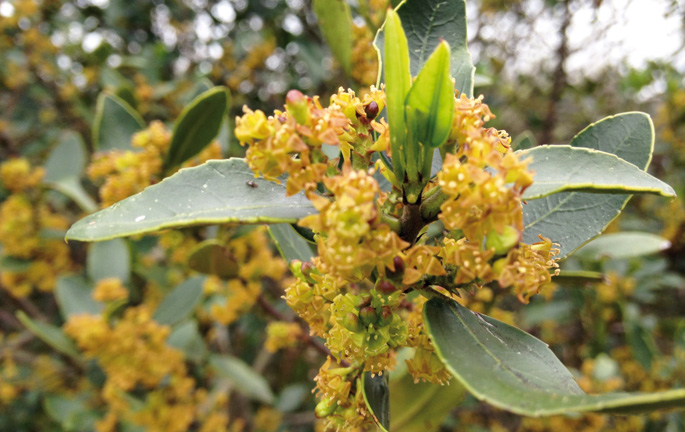

Carrozillo or snail (Rhamnus alaternus) is not abundant. It is berozale and lives very well among other trees and shrubs that share this same hobby, such as the Madroño (Arbutus unedo), the cork oak (Quercus suber), the bull (Laurus nobilis), the motherhood (Quercus pyrenaica) and others that do not have “resurrection” at the end of the name, such as the white heather or lettuce (Hojalata). He likes temperate wet regions. In the paradise of the coast of the Basque Country you enjoy, but not everywhere, the lands you like are dry, with little nitrogen and high pH; it is not in vain that the inhabited areas of the carrozillo are art lands.
It is a dioecious species, that is, some plants are females and other males. I already said it the other day, when the pollen of the male fertilizes the female, if you eat the fruit that the latter gives, the casings will empty in the blink of an eye. In case of massive ingestion, the risk of bleeding or bleeding in the cavity is very high. The water of its new branches and leaves is taken to shed blood; the Catalan botanist Pío Font i Quer explains it perfectly in the book Medicinal Plants, The Revamped Dioscorides (1961): to put a scratch in the water, when it boils, to say a godfather and to remove it from the fire. They say that you have to drink it in the morning, fasting, not mixing sugar and not doing nonsense or nonsense, inside the rau! Today, thanks to the moon, as we do not know godfathers, what will we have to say? What verse or song does the stature or likeness of that old father have? Whoever knows that, let him.
With its branches, clubs are made. The skin is used to dye yellow wool. The wood, compact, hard and equal, is good to work around. The ethnographer and honorary scholar Alavés Gerardo López de Guereñu, in his work Popular Botany Alavesa (1975), smells of this wood and is an excellent fuel for heating bread ovens. Like his cousin Rhamnus, that of the Zumalicar franga, he's able to make mangoes. On this cousin, the Navarro biologist Luis Miguel García Bona brings us a nice curiosity in Navarre, medicinal plants (1981): his light coal was used to make gunpowder.